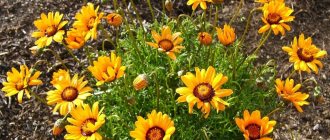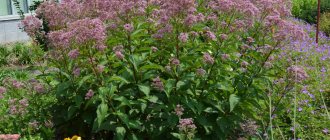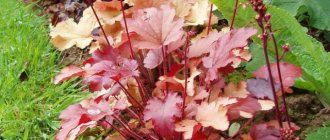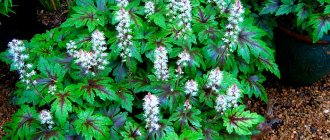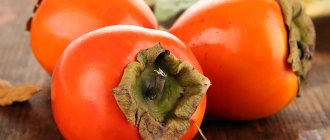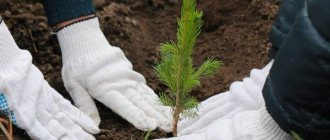2. Varieties and types of kandyk:
2.1. Siberian Kandyk - Erythronium sibiricum
A variety of erythronium native to southeastern Siberia. The leaves are spotted, dark purple, wide. The peduncle bears a single cyclamen-shaped flower at the top. The flowers are pink to purple, often with a distinct reddish tint, and the throat is yellow. The bushes reach a height of 30 cm. Siberian kandyk reproduces well with fresh seeds if they are sown immediately.
↑ Up,
2.2.Erythronium tuolumnense
This variety is often used in hybridization and breeding of new varieties of erythronium. They are compact bulbous perennials 25 - 30 cm high. The leaf blades are uniform, glossy, dark green. During the flowering period, the plant throws out flower stalks, each of which can bear up to 10 small drooping flowers of bright yellow or shade. The flowers reach 4 cm in diameter and bloom in mid-May.
↑ Up,
2.2.1.Kandyk Pagoda - Erythronium Pagoda
One of the hybrids of Erythronium tuolumnium. Plants reach a height of 30 - 35 cm. Each peduncle is capable of bearing an inflorescence at the top. consisting of 7 - 9 yellow buds. The leaves are green, sometimes with faint brownish or burgundy streaks.
↑ Up,
2.3. Lemon-yellow candyk - Erythronium citrinum
One of the American species that is most widespread in California. It is a low flowering plant with large and wide green leaves with light spots and streaks. The flowers are white, cream or light yellow, drooping, solitary.
↑ Up,
2.4. Caucasian Kandyk - Erythronium caucasicum
The earliest spring primrose among bulbous plants and among all erythroniums. Plants have 2-3 leaf blades, colored burgundy-brown with green specks. The flowers are solitary, drooping, with long cream or white petals and a yellow center.
↑ Up,
2.5.European candyk - Erythronium dens-canis
A spectacular flowering and decorative foliage plant with wide leaf blades painted in a burgundy or brownish tint with light green, mint-colored specks and spots on the surface. The buds are single, bell-shaped, lilac.
↑ Up,
2.6.Japanese candyk - Erythronium japonicum
One of the smallest erythroniums - the height of the plant can be 15 - 25 cm. Each bush has 2 lanceolate leaf blades, painted in a single green color. Peduncles are thin, vertical, slightly curved at the tops. The flowers are lilac and resemble cyclamen in shape.
↑ Up,
2.7.Erythronium californicum
A bulbous perennial up to 30 cm high with wide green leaves, on the surface of which there are often whitish stains. Peduncles are erect, can bear 1 - 3 drooping flowers with cream petals. The flowers are quite large and can reach 6–8 cm in diameter.
↑ Up,
2.8. Krylov’s Kandyk - Erythronium krylovii
Plants with thick, light green. often monochromatic leaves, sometimes with a slight purple tint. An interesting feature of the variety is the change in color of the buds as they bloom - only the blooming flowers are white, while as they wither, the petals can become pink and even lilac.
2.9.Kandyk Suleva - Erythronium sulevii
Plants found in the Altai Territory are distinguished by light green leaves covered with small light specks and large, attractive, single flowers. The buds have long, thin petals bent back. in the center the buds can be colored light, almost white, yellow or greenish, or, conversely, dark, brownish or gray.
2.10. American Kandyk - Erythronium americanum
A striking representative of erythroniums, reaching a height of only about 20 cm. The bushes have brownish leaves with light green, mint-colored spots. The bright yellow, single flowers with long petals contrast perfectly with the leaves.
↑ Up,
2.11. Sayan Kandyk - Erythronium sajanense
Plants with dark, brown leaves speckled with green and thin, upright flower stalks. The buds are bright, with bent back, tricolor petals - lilac with a white stripe and a yellow tint in the center. Often these plants cover vast spaces and form a continuous floral carpet.
↑ Up,
2.12.Henderson's candyk - Erythronium hendersonii
Plants with very early flowering have oblong-oval leaves with a light green base color and large, brownish spots on the surface. The flowers are drooping, with petals bent back in a white, pink or lilac hue. Each flower stalk usually contains 1 - 4 buds.
↑ Up,
Taxonomic structure
Fruiting Siberian Kandyk. Khakassia, .
Siberian kandyk is characterized by significant variability. Its local areas are heterogeneous and you can often find noticeably different plants nearby: with single-colored and variegated leaves, flowers of various shades of lilac-pink color and sizes. Many plants, as the most decorative, were introduced into cultivation, and special varieties were bred on their basis. Thus, significant work with Siberian kandyk in Altai was carried out by Z. I. Luchnik (1951). G.V. Skakunov also developed several varieties of kandyk with large and brightly colored flowers and different flowering periods:
- 'White Tsar'. Early variety, flowering from April 12 to April 22. The flowers are pure white with a lemon center edged with subtle reddish dots. Towards the end, the flowers acquire a turban-like shape. The leaves are bright green.
- 'White Fang'. Blooms from April 23 to April 30. The flowers are pure white with a yellowish center, 6 cm in diameter. The peduncle and leaves are green.
- 'Olga'. Blooms from April 26 to May 6. The flowers are lilac-pink, covered with dark pink dots, with white edging of the lobes. The leaves are brown-green with a green stripe along the edge. There are other varieties.
Based on expedition materials, plant breeder Janis Rukshans described two from the Altai Mountains: subsp. altaicum
(from Tuva, with white flowers, resembling Caucasian kandyk in appearance) and subsp.
sulevii
(Altai Mountains, with lilac flowers and purple anthers, similar in appearance to Japanese candyk).
Synonyms
According to the data, the species include:
- Erythronium altaicum,
- Erythronium dens-canis var. parviflorum
- Erythronium dens-canis var. sibiricum &
- Erythronium sibiricum subsp. altaicum Rukšāns
- Erythronium sibiricum subsp. sulevii Rukšāns
3.Hybrid varieties:
3.1.Kandyk White Beauty - Erythronium White Beauty
With age, this variety is capable of forming large grassy tussocks. The leaves are light green, glossy, with light streaks. The flowers are delicate - with white or cream petals and yellow centers. Flowering occurs in April - May.
↑ Up,
3.2.Kandyk Kondo - Erythronium Kondo
Bushes 20-30 cm high with large, brownish-green leaves in smooth patterns and bright yellow, wide-open buds. Each peduncle can contain up to 7 drooping flowers.
↑ Up,
Description of kandyk
The height is small, 10-30 cm, less often, under the most favorable conditions - 60 cm. The bulb is elongated, cylindrical or ovoid. At the base of the peduncle there are two long elongated leaves located opposite each other, which makes the plant even more elegant and emphasizes the beauty of the flowers.
The flower is usually single, large, with six long petals gathered into a bell hanging down. The edges of the petals gracefully bend upward. It resembles the common indoor flower cyclamen or small lily.
Flowering begins in April-May and lasts 2-3 weeks. Moreover, each flower opens very quickly, literally before our eyes, and blooms for 8 days. Afterwards, a fruit is formed in the form of a capsule with several seeds. But the terrestrial life period of erythronium is short; the green parts of the plant dry out and die in the second half of summer.
The plant is a honey plant and gave its name to a very rare early variety of honey. Kandyk honey is collected by bees in Altai and Siberia. In liquid form it is dark in color, but crystallizes very quickly and at the same time lightens to the shade of baked milk. It has unusual taste and medicinal properties.
Erythronium tubers are also used for medical purposes. They treat epilepsy, impotence, and pulmonary diseases.
In gardening, kandyk is grown in separate clearings or on alpine hills in combination with other primroses. It is increasingly being used for forcing along with tulips and hyacinths. Flowers do not fade for a long time when cut, so they are used for spring floral arrangements.
4. Planting and care
4.1.How and when to plant
Primroses that bloom immediately after the snow melts can be planted at the foot of trees or shrubs. During this period of time, the sun's activity is too high, and there are no leaves on the plants yet and it will be convenient for the flower to develop in the lacy shade. It would be advisable to plant varieties with later flowering in places where the sun shines in the morning or evening.
↑ Up,
Too acidic soils should be poured with milk of lime and mixed with crushed chalk. If the soil on the site is poor in nutrients, then pre-fertilize with superphosphate or other mineral fertilizers for flowering plants.
For planting, planting holes are prepared; their depth will depend on the specific variety and size of the bulbs. Erythronium American, whitish, multi-stemmed, Henderson, mountain, lemon yellow, Californian, large, wrapped, Tuolumnium is buried 15 - 20 cm, while for Erythronium Caucasian, Siberian, European and Japanese, 10 - 15 cm will be enough. depths.
↑ Up,
You can put a small - about 1 cm layer of river sand - at the bottom of the planting holes - it will remove excess moisture and protect the bulbs from rotting. Before planting, the bulbs are inspected and the strongest and healthiest, free from mechanical damage, are selected. Since kandyk is excellent in group plantings, 3-4 bulbs can be placed in each hole. After planting, the area is watered with plenty of water.
In order to prevent the rapid evaporation of moisture from the soil surface and delay the development of weeds, plantings can be mulched with mowed grass, burnt saw blades or straw.
↑ Up,
4.2.Caring for a flower in the garden
Caring for planted plants is simple and can be done by the most inexperienced gardeners. Plants will need to be provided with timely watering, fertilizing and weeding.
Primrose varieties of kandyk, which open buds immediately after thawing of the ground surface, are first fed on the snow - simply scatter granules of mineral fertilizers with a high content of phosphorus and potassium on the surface of the snow. Later flowering varieties begin to be fed with the first signs of new growth. The second feeding is carried out as soon as the peduncle begins to form and the last - the third can be done after flowering, preparing the bulbs for the dormant period.
↑ Up,
The flower has a positive attitude towards organic fertilizers, but you should not overdo it with organic matter. Plants with early flowering are not watered at first - melt water from the snow is enough for them - watering begins in May, when the soil dries out.
The root system of the kandyk loves to receive not only food, but also oxygen, so after watering or rain the soil is loosened, and at the same time the weeds are removed.
↑ Up,
4.3.Wintering in open ground
In central Russia, erythronium overwinters without any problems without additional shelter. In areas characterized by frosty and little snow winters, it is better to protect the flower with shelter. Before the onset of frost, I cover the areas with planted bulbs on top with pine or spruce spruce branches or sprinkle them with leaf litter. As soon as the sun begins to warm up in the spring, the shelter is removed.
↑ Up,
Kandyk: landing requires compliance with conditions
To succeed in growing kandyk, you must comply with some conditions that should be elevated to the rank of rules.
- Do not delay planting newly acquired bulbs, as they may dry out.
- Planting immediately increases the bulbs' chances of survival and improves the prospects for good plant establishment.
- The depth of planting the bulbs should correspond to their height.
- During the growing season, kandyks should not overheat in the sun. To avoid overheating, measures are taken to protect the underground part with the help of ground cover plants.
- Kandyk needs regular watering. An overdried kandyk bulb will inevitably die.
- The last rule is not to replant kandyki more often than necessary. All kandyks find it difficult to tolerate the transplant procedure.
Bulbs planted in compliance with all these rules will find it much easier to adapt to a new location. And proper care will give them the opportunity to show miracles of decorativeness in the shortest possible time.
The mother bulb of the kandyk is renewed annually. Like all ephemeroids, in kandyks the growing season ends after the seeds ripen, i.e. early. The aboveground part of the plant dies off, and the bulbs no longer need to worry about overheating or drying out.
5. Useful properties and contraindications
The honey obtained from kandyk flowers is widely known - in addition to its excellent taste and bright floral aroma, this delicacy also has many healing properties. This honey is collected in Siberia and the Altai region. The erythronium plant is an unsurpassed honey plant - early flowering and a special system for protecting pollen during rain allow bees to collect large amounts of it even in limited areas.
It is interesting that the fresh product has a dark color and is close in appearance to buckwheat honey, and after crystallization it lightens in color and becomes similar to baked milk. Crystallization occurs very quickly - 2 - 3 weeks after honey collection.
↑ Up,
Unfortunately, many varieties of kandyk growing in our country are listed in the Red Book, so honey from this flower can rarely be found on sale.
- Among the many beneficial substances that honey contains are iron, iodine, zinc, manganese, copper and calcium, vitamins B, C, E and K.
- It is believed that regular consumption of such honey helps to improve the condition of the liver, while the bile duct is cleansed, and damaged liver tissue is restored in the shortest possible time. Doctors recommend consuming this honey after poisoning and long-term use of medications that have a negative effect on the liver.
- The beekeeping product has a positive effect on the digestive system; it is recommended to be used for pancreatitis and diseases of the pancreas.
- Honey has a beneficial effect on the nervous system, reduces the number and duration of epileptic seizures, and improves the quality of sleep.
- Of course, the most well-known benefits of honey are its diaphoretic and expectorant properties, which are used during cold and flu season.
- Also, consuming honey has a beneficial effect on the general condition of the body and helps strengthen the immune system.
- Adding honey to skin care products can make it soft, moisturize and rejuvenate.
It is also recommended to rinse your hair after washing with a honey solution - this will strengthen the hair follicles and reduce hair loss. ↑ Up,
Interestingly, various parts of plants are also used in folk medicine - for example, the bulbs have a sedative effect and are used for epilepsy. The leaf plates can strengthen the immune system and have a positive effect on potency - they are dried and decoctions are made.
Contraindications for use are the presence of all kinds of allergic reactions to pollen and bee products. You should also not exceed the recommended doses of decoctions and honey, as this can lead to hypervitaminosis.
↑ Up,
Early honey plant Siberian kandyk
Siberian Kandyk (Eritronium sibiricum Fisch.&C.A.Mey) Krylov. - belongs to the lily family, which includes the most beautiful plants of our flora, such as: lily of the valley, lilies, kupena, tulips and many others. The Russian name comes from the Turkic word kandyk - dog tooth, because the elongated bulb is shaped a little like dog fang.
Geographical range and ecology
This plant is endemic to Southern Siberia, a relic of the Tertiary period that survived the glaciation era. In addition to Siberia, Siberian kandyk can be found in the mountains of Central Asia, Mongolia and Northern China.
Its most numerous populations were found west of the Yenisei, in Khakassia, Novosibirsk, Tomsk and Kemerovo regions, and in Altai.
Like most of its relatives in Europe and North America, the Siberian kandyk prefers light deciduous forests of the alpine belt; in the highlands it reaches the belt of snowfields and alpine meadows. In dark coniferous forests it prefers to grow in open clearings and edges.
Botanical features
- Plant height is from 15 to 30 cm, the bulb is narrow-conical, 4-8 cm high and 1 cm in diameter.
- Leaves with short petioles, opposite, lanceolate - 8-15 cm long, have a spotted pattern.
- Flowers are solitary, tepals (petals) - 6, up to 8 cm long.
- The fruit is a triangular capsule, the seeds are large and few in number.
- Kandyk is a typical ephemeroid - after flowering, the above-ground part of the plant dies.
- Flowering begins immediately after the snow melts, in mid-April and lasts two to three weeks.
A continuous carpet of dark pink, cyclamen-like, flowering kandyks is an unforgettable sight.
Healing properties of kandyk honey
Thanks to its incomparable properties, Siberian kandyk honey is considered the rarest variety. Its abilities:
- cleanses the liver and bile ducts, while being able to remove both toxic substances and medications;
- strengthens the immune system;
- has strengthening and rejuvenating effects;
- normalizes the functioning of the nervous system;
- helps improve lactation in nursing mothers;
- improves the functioning of the pancreas.
Growing in culture
Siberian kandyk is very promising as an ornamental garden plant. It is distinguished by frost resistance and unpretentiousness. Prefers moist, loose, peaty soils with a slightly acidic reaction. Unlike the North American and Southern European species of kandyk and their varieties common in gardens, Siberian kandyk does not require shelter for the winter.
In gardens, it feels great under the crowns of trees and, together with other early spring bulbous ephemeroids, serves as an excellent decoration for a spring garden that is not rich in colors.
It is propagated by seeds or bulbs. Seeds are sown immediately after ripening, as they quickly lose their viability. Young plants grown from seeds bloom in the third or fourth year. When propagating by bulbs, you should remember that the bulbs are easy to damage or dry out, because...
their skin is very thin. Therefore, before planting and during transportation, they are stored in slightly moist peat. Kandyk bulbs can be planted in the fall, once every four to five years. In the middle of the last century, a lot of breeding work was carried out to select decorative forms of Siberian kandyk.
Unfortunately, the varieties bred by Altai breeders are rare in cultivation, many of them have been lost. It is worth mentioning the white-flowered varieties “White Knight” and “White Fang”.
I would like to hope that in the future, domestic originators of ornamental crops will pay closer attention to kandyk, which it undoubtedly deserves
Economic use
As an endemic plant of Southern Siberia, Siberian kandyk is included in the Red Book of the Russian Federation and is under protection, therefore its mass collection as a medicinal and ornamental plant is prohibited or limited.
In the old days, edible kandyk bulbs were harvested in large quantities, and a low-alcoholic drink reminiscent of beer was also prepared from them. It was also used as a medicinal plant - a remedy for epilepsy. Aphrodisiac properties are also attributed to all types of kandyk.
And in conclusion, it is worth noting that kandyk is an excellent early honey plant.
Bees collect up to 45 kg from one hectare. honey
Kandyk honey is dark, aromatic with an unforgettable aftertaste. According to traditional medicine specialists, it has unique healing properties - it has a beneficial effect on the functioning of the pancreas, improves the functioning of the bile ducts and accelerates the regeneration of liver tissue after hepatitis. In addition, it normalizes cardiac activity and digestion.
After flowering
In order for plants not to waste their energy on forming seeds, but to release nutrients into the bulbs, it is worth removing flower stalks with fading buds. The shoots are cut with a sharp sterile knife or pruning shears. The leaf blades should not be touched, as they will continue to feed the bulb until they die completely.
↑ Up,
Security status
Siberian Kandyk is included in the Red Book of Russia and the regions in which this species is found: Krasnoyarsk Territory, Khakassia, Altai Territory, Tomsk Region, Novosibirsk Region. It is considered a vulnerable relict species. It should also be noted that local spread increases the threat of complete destruction of this species. Despite the massive growth of Siberian kandyk in some regions, the threat to its existence as a full-fledged native species remains.
Of great importance are the factors of cutting down natural habitats, in addition to the collection of the species by humans for sale for food purposes or as an ornamental early spring plant. In markets in Siberian cities, despite the state conservation status of the species, bouquets of this plant are sold in April.
Video
Reproduction
There are 2 ways to propagate kandyk - by separating daughter bulbs and sowing seeds.
8.1.Separation of daughter bulbs
Since during each year 1 - 2 small daughter bulbs are formed near the mother bulb, over time the bushes become crowded and it is worth planting them and dividing them into several parts. Depending on the timing of flowering, this procedure is carried out in different summer months - when the buds have completely withered and the leaf blades begin to die. You should not delay replanting, because when the entire above-ground part dies off, finding the bulbs in the ground will be problematic.
Plants are dug up, cleared of soil, broken by hand and inspected for diseases and pests. If a wound surface appears during the division process, sprinkle it with charcoal powder. If there are signs of rot, then the affected areas are cut back to healthy tissue with a knife and also sprinkled with wood ash or coal.
Kandyk bulbs are not suitable for long-term storage - they quickly lose moisture, so after dividing and processing they should be immediately planted in the ground - adults, as described above, and small ones - separately, to a depth equal to 2 times the height of the bulbs. If it is impossible to plant immediately, then store the planting material in small wooden boxes with moistened river sand or peat.
↑ Up,
8.2.Growing from seeds
For propagation, you can use your own collected seeds. For collection, choose a fine - dry and warm day. Seed pods are separated from plants when they are almost ripe (approximately in June) - fully ripened pods open on their own and release seeds into the soil. The signal to collect the seed pods will be the yellowing of their walls - then they will begin to dry out. To ripen, the boxes are brought into a warm and well-ventilated room. To ensure that the planting material does not disappear, you can also pre-close the immature boxes with gauze.
A small area is prepared for sowing - weeds are carefully removed and the soil is dug up. Sowing seeds in open ground is carried out in the second half of August, in grooves about 3 cm deep. About 10 cm of free space is left between the grooves. Since the seeds are quite large, they are easy to distribute evenly along the grooves, maintaining a distance between plants of about 5 cm. The grooves are dropped in drops and watered generously with warm water. Ants love to taste Kandyk plantings - such areas should be protected from the invasion of harmful insects.
↑ Up,
When sown in winter, kandyk seeds undergo cool stratification in a natural way. You can also try sowing seeds in spring, but they will have to undergo stratification for 2 - 3 months in the refrigerator - in the vegetable compartment. The seeds are first sprinkled with damp river sand or peat and placed in a plastic bag.
If winters in the region are harsh and there is little snowfall, then the crops should be covered with non-woven material on top before the onset of frost. The first small shoots will appear in the spring, as soon as the ground thaws. In the first 4 - 5 years of life, it is advisable not to transplant the kandyk from place to place - you need to give it the opportunity to develop independently. Replanting at this time can lead to the death of the flower, since the bulbs of young bushes are very fragile.
↑ Up,
In the first years, the plants will not form buds - all their strength will be spent on the development of the bulb. In flowers of the first year of life, its diameter will be about 4 cm; in the second year, the diameter of the bulb can already reach 7 cm. Also, plants of the second year of life form small true leaf blades of a single green color. In the third year, the bulb grows to 8 cm in diameter and goes into the ground to a depth of 7 - 10 cm, and a characteristic pattern appears on the leaves. In the fourth and fifth years of life, if agricultural techniques are followed, it will be possible to see the first buds on plants obtained from seeds.
↑ Up,
Caring for erythronium in the garden
Growing conditions
Planting and caring for erythronium is simple and not labor-intensive. The plant almost does not need watering, and if the area is mulched, then loosening and removing weeds will also be necessary infrequently.
Watering and fertilizing
In early spring, when the active growth of kandyk begins, the soil is usually saturated with melt water, so the plant may need moisture only in May and if the spring turns out to be dry.
From time to time, after rain or watering, you should lightly loosen the soil around the plants and remove weed seedlings.
As for fertilizing, for the first season the plant will have enough fertilizer applied to the soil during planting or sowing, and then simply mulch the area with organic material - peat or leaf humus. Erythronium also responds well to mineral fertilizers for ornamental flowering plants.
In the photo: Growing kandyk in the ground
Transplantation and propagation
Once every 4-5 years, you should dig up and replant kandyk bulbs that have turned into nests over such a period of time. Simultaneously with the transplantation, erythronium is propagated by dividing the bulb. It is better to do this in the second half of summer, in July or even in August, when the plants are dormant. By this time, the erythronium foliage should have already turned yellow, and the bulbs should have regained their strength after flowering.
The children are separated from the dug up bulbs and, having treated the fracture sites with coal powder, the planting material is quickly planted in the furrows prepared in advance in the manner described earlier. It is impossible to keep the bulbs in the air for a long time, since they do not have covering scales and immediately begin to dry. If there is a need to store planting material, then place the bulbs in a box with damp sand, sphagnum or peat.
- Crocuses: planting in open ground in autumn
We already told you how to propagate erythronium by seed at the beginning of the article.
Erythronium in winter
The cold resistance of erythronium allows it to spend the winter in open ground, however, in very severe frosts or snowless winters, the area must be covered with a thick layer of dry leaves or spruce branches. Remove the cover in early spring, when the snow melts.
9.When and how to replant the kandyk
You shouldn’t often disturb the flower unnecessarily - erythronium does not like transplants unless necessary. When grown in open ground, the flower can remain in the same place for 4 - 5 years. All this time, the plant will form small daughter bulbs under the surface of the soil. This division will ultimately cause the flowers to become crowded and begin to experience nutritional deficiencies. Lack of nutrition will immediately affect the appearance - the plants will become weak and begin to shrink.
Such nests are transplanted after first dividing them into several parts. Under no circumstances should you replant at the time of flowering - the plants will suffer for a long time after it and may even die. For transplanting, it is better to choose a cloudy or even rainy day - in the sun, in warm weather the bulbs can quickly dry out and die, since they do not have protective covering scales on the surface.
↑ Up,
9.1. Plant diseases and pests
Rot may appear if the flower is planted in a flooded lowland. The affected parts of the bulb are cut off and the cut areas are treated with a fungicide or sprinkled with crushed charcoal. Of the pests for the kandyk, the greatest threat is posed by small rodents and moles. Of the insects, mole crickets can attack the flower.
↑ Up,
Pests and diseases
Erythronium is resistant to diseases, and its main enemies are mole crickets and rodents - moles and mice. To avoid the death of all erythroniums, it is advisable to plant them in different places in the garden. In pest control, traps are used: for mice and moles - baits with poison, and for mole crickets, holes are dug and fresh manure is placed there, into which insects will certainly crawl to lay eggs. Traps for mole crickets are covered with pieces of board or slate, and when a decent number of pests have collected in them, you can begin to destroy them.
10. Soil composition
Kandyk prefers well-drained soils with a high organic content and a slightly acidic pH level. Mixtures based on turf and leaf humus with the addition of peat and humus are suitable. To improve moisture permeability, river sand is mixed into the soil; do the same if the soil on the site is too heavy.
↑ Up,
11.Use in landscape design
Thanks to its early flowering, erythronium is able to decorate the garden while the vast majority of plants are still dormant and even there are no leaves on the trees. The most valuable quality of the plants is also that they grow successfully on the northern side of the site - where few flowers will survive. The flower looks great in rock gardens or rocky gardens. Kandyk is quite hardy and unpretentious and will go well with many other spring primroses - snowdrops, chionodoxa, lumbago and other flowers.
↑ Up,
Use and meaning
Siberian Kandyk is a valuable food and ornamental plant.
One of the most decorative and colorful species of the genus. Of incredible value is the early flowering, which, as mentioned above, occurs immediately after the snow melts, when there are few other flowering species. Incredibly cold-resistant. To date, a huge number of species of Siberian kandyk have been bred, which differ from each other in decorative features and flowering period.
Siberian Kandyk is used in landscaping on lawns - in spots along with other perennials. Its original appearance and early flowering make it a very interesting and valuable plant. Large bulbs are used for forcing; the flowers last for several days in water.
But these are not all the areas where Siberian kandyk has found application. Honey is collected from it in early spring. It has a pure color and a very pleasant aroma. The bulbs of the plant can be eaten; previously they were harvested en masse in some places in Southern Siberia. In addition, the bulbs are eaten by animals, including wild boars.


